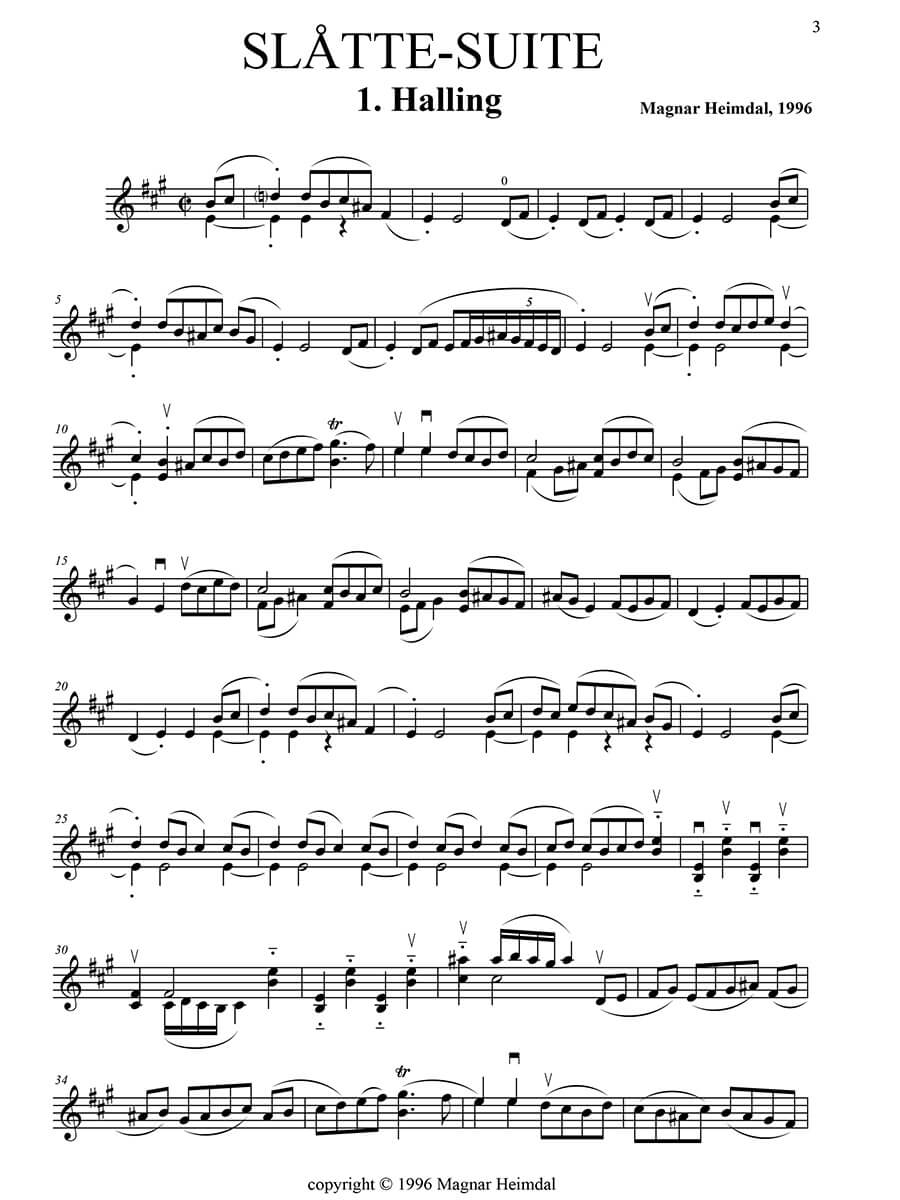Four Solo Violin Pieces: Slåtte-Suite / In G / Arjun’s Arrow / Withering Frost (first print)
Heimdal, Magnar
24,00 €
Preface
Magnar Heimdal – Four Solo Violin Pieces
(b. June 7th 1973, Tønsberg)
Slåtte-Suite (1996)
In G (1999 rev. 2012)
Arjun’s Arrow (2013)
Withering Frost (2016-2018)
First public performance of all four works: Midgard Vikingsenter, Borre
October 4th 2020, Ricardo Odriozola
Magnar Heimdal received his higher music education at the Grieg Academy in Bergen, obtaining degrees in violin, pedagogy and composition.
He mainly works as a violin teacher and orchestra leader at the municipal culture school in Horten. When time allows, he writes music. In recent years he has organized several concerts with his own compositions. He likes to experiment with combining texts – both his own and other people’s – with the music, and often uses them instead of conventional work introductions. In his music school work he has scripted and arranged music for two performances, one based on Monteverdi’s “L’Orfeo” and one about the local coastal culture. He is currently (2023) planning to make a children’s version of “The Magic Flute”. In his spare time he plays in the local amateur symphony orchestra. He also enjoys wildlife, beer and growing tomatoes, and is concerned about the disregard of people and politicians for science, logic and long term thinking, and the all too visible egocentric behaviour of humans.
The composer writes:
My music has been under development but I have gradually landed on a style and philosophy that I can try to describe. My most important sources of inspiration, besides the classics up to our time are Indian music, African music, European minimalism (mostly Michael Nyman and Louis Andriessen) and Norwegian folk music. I make no qualitative distinctions between genres and am more interested in what they have in common that in what makes them different from one another. If one looks at all the music on Earth and through history as a whole, a lot of it goes in quadruple or triple time signatures and a diatonic (but not necessarily tempered) seven-note scale. There are, of course, variations of this. Twelve-tone and Serialism are artificial deviations that have little to do with the music of the rest of the world. All the same, a lot of fine and exciting music has been written using these techniques.
Making sounds that are outside of the purpose for which instruments are made is interesting and can expand sonic possibilities. This must, however, not become a straitjacket for composers. It is not new, either. Such experimentation has taken place in different ways for as long as instruments have existed. …
Read full preface > HERE
Score Data
| Special Edition | Amethyst Edition |
|---|---|
| Genre | Solo Instrument |
| Pages | 52 |
| Size | 225 x 320 mm |
| Printing | First print |
| Specifics | Performance Score |
